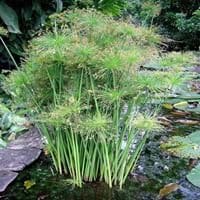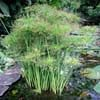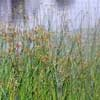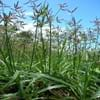Life Span
Perennial
Perennial
Origin
World/Pandemic
Europe, Southern Asia, Southeastern Asia, India, China
Types
Not available
cinnamomeum, zeylanicum, delavayi
Number of Varieties
Not Available
Habitat
Grassland, Wet lands
Dappled Shade, Woodlands
USDA Hardiness Zone
7-11
7-9
Sunset Zone
H1, H2, 16, 17, 23, 24
H1, 8, 9, 14, 15, 16, 17, 23, 24
Habit
Spreading
Upright/Erect
Flower Color
Green, Brown
White, Red, Pink
Flower Color Modifier
Not Available
Bicolor
Fruit Color
Not Available
Brown, Chocolate
Leaf Color in Spring
Green
Green, Dark Green
Leaf Color in Summer
Green
Dark Green
Leaf Color in Fall
Green
Dark Green
Leaf Color in Winter
Not Available
Dark Green
Leaf Shape
Grass like
Ovate
Plant Season
Spring, Summer, Fall
Spring, Summer, Fall, Winter
Sunlight
Full Sun, Partial Sun, Partial shade
Full Sun, Partial Sun
Growth Rate
Medium
Medium
Type of Soil
Clay, Loam, Sand
Loam, Sand
The pH of Soil
Acidic, Neutral, Alkaline
Acidic
Soil Drainage
Poorly Drained
Average
Bloom Time
Early Summer, Summer, Late Summer, Early Fall
Early Spring, Spring, Late Spring
Tolerances
Drought
Not Available
Where to Plant?
Container, Ground, Pot
Ground
How to Plant?
Bulbs, Divison, Rhizome division, Tubers
Seedlings
Plant Maintenance
Medium
Medium
Watering Requirements
Do not let dry out between waterings, Keep ground moist, Keep the Soil well drained
Reduce water once established
In Summer
Lots of watering
Lots of watering
In Spring
Moderate
Moderate
In Winter
Average Water
Average Water
Soil pH
Acidic, Neutral, Alkaline
Acidic
Soil Type
Clay, Loam, Sand
Loam, Sand
Soil Drainage Capacity
Poorly Drained
Average
Sun Exposure
Full Sun, Partial Sun, Partial shade
Full Sun, Partial Sun
Pruning
Not Available
Prune after flowering, Prune if you want to improve plant shape, Remove dead or diseased plant parts
Fertilizers
can go long without fertilizers
Doesn't require fertilization when grown in rich soil, Fertilize in early spring, fertilize in winter, Mulch
Pests and Diseases
Red blotch
Phytophthora, Thripes
Plant Tolerance
Drought
Not Available
Flower Petal Number
Single
Single
Foliage Texture
Fine
Coarse
Foliage Sheen
Glossy
Glossy
Attracts
Birds, Butterflies, Flying insects
Butterflies
Allergy
Itchiness, Skin rash
Not Available
Aesthetic Uses
Beautification, Bog Garden, Showy Purposes, Used for decorating walls, fences, gates, hedges, etc.
Showy Purposes
Beauty Benefits
Not Available
Not Available
Environmental Uses
Air purification
Insect Repellent, Shadow Tree, Windbreak
Medicinal Uses
Not Available
antimicrobial, Cancer, Dermatitis
Part of Plant Used
Not Available
Flowers, Leaves
Other Uses
Container, Decoration Purposes, Florist trade and landscaping, Used as Ornamental plant
Used as fuel, Used as insect repellent, Used as Ornamental plant, Used for its medicinal properties
Used As Indoor Plant
Yes
No
Used As Outdoor Plant
Yes
Yes
Garden Design
Bog Garden, Container, Tropical, Water Gardens
Feature Plant, Mixed Border, Topiary / Bonsai / Espalier
Botanical Name
Cyperus papyrus
RHODODENDRON arboreum
Common Name
Dwarf papyrus, Miniature papyrus
Chalan, Rose Tree, Tree Rhododendron
In Hindi
dwarf papyrus
लाल बुरांश
In German
Zwerg Papyrus
Rhododendron arboreum
In French
papyrus nain
Rhododendron arboreum
In Spanish
papiro enano
arboreum rododendro
In Greek
νάνος πάπυρο
Rhododendron arboreum
In Portuguese
papiro anão
arboreum Rhododendron
In Polish
krasnolud papirus
różanecznik drzewiasty
In Latin
P. papyrus
Prunus arborea
Phylum
Tracheophyta
Magnoliophyta
Class
Magnoliopsida
Magnoliopsida
Family
Cyperaceae
Ericaceae
Genus
Cyperus
Rhododendron
Clade
Angiosperms, Commelinids, Monocots
Angiosperms, Asterids, Eudicots
Tribe
Not Available
Not Available
Subfamily
Not Available
Not Available
Number of Species
Not Available
Importance of Dwarf Papyrus and Rhododendron Arboreum
Want to have the most appropriate plant for your garden? You might want to know the importance of Dwarf Papyrus and Rhododendron Arboreum. Basically, these two plants vary in many aspects. Compare Dwarf Papyrus and Rhododendron Arboreum as they differ in many characteristics such as their life, care, benefits, facts, etc. Every gardener must at least have the slightest clue about the plants he wants to plant in his garden. Compare their benefits, which differ in many ways like facts and uses. The medicinal use of Dwarf Papyrus is Not Available whereas of Rhododendron Arboreum is antimicrobial, Cancer and Dermatitis. Dwarf Papyrus has beauty benefits as follows: Not Available while Rhododendron Arboreum has beauty benefits as follows: Not Available.
Compare Facts of Dwarf Papyrus vs Rhododendron Arboreum
How to choose the best garden plant for your garden depending upon its facts? Here garden plant comparison will help you to solve this query. Compare the facts of Dwarf Papyrus vs Rhododendron Arboreum and know which one to choose. As garden plants have benefits and other uses, allergy is also a major drawback of plants for some people. Allergic reactions of Dwarf Papyrus are Itchiness and Skin rash whereas of Rhododendron Arboreum have Not Available respectively. Having a fruit bearing plant in your garden can be a plus point of your garden. Dwarf Papyrus has showy fruits and Rhododendron Arboreum has no showy fruits. Also Dwarf Papyrus is not flowering and Rhododendron Arboreum is not flowering . You can compare Dwarf Papyrus and Rhododendron Arboreum facts and facts of other plants too.





